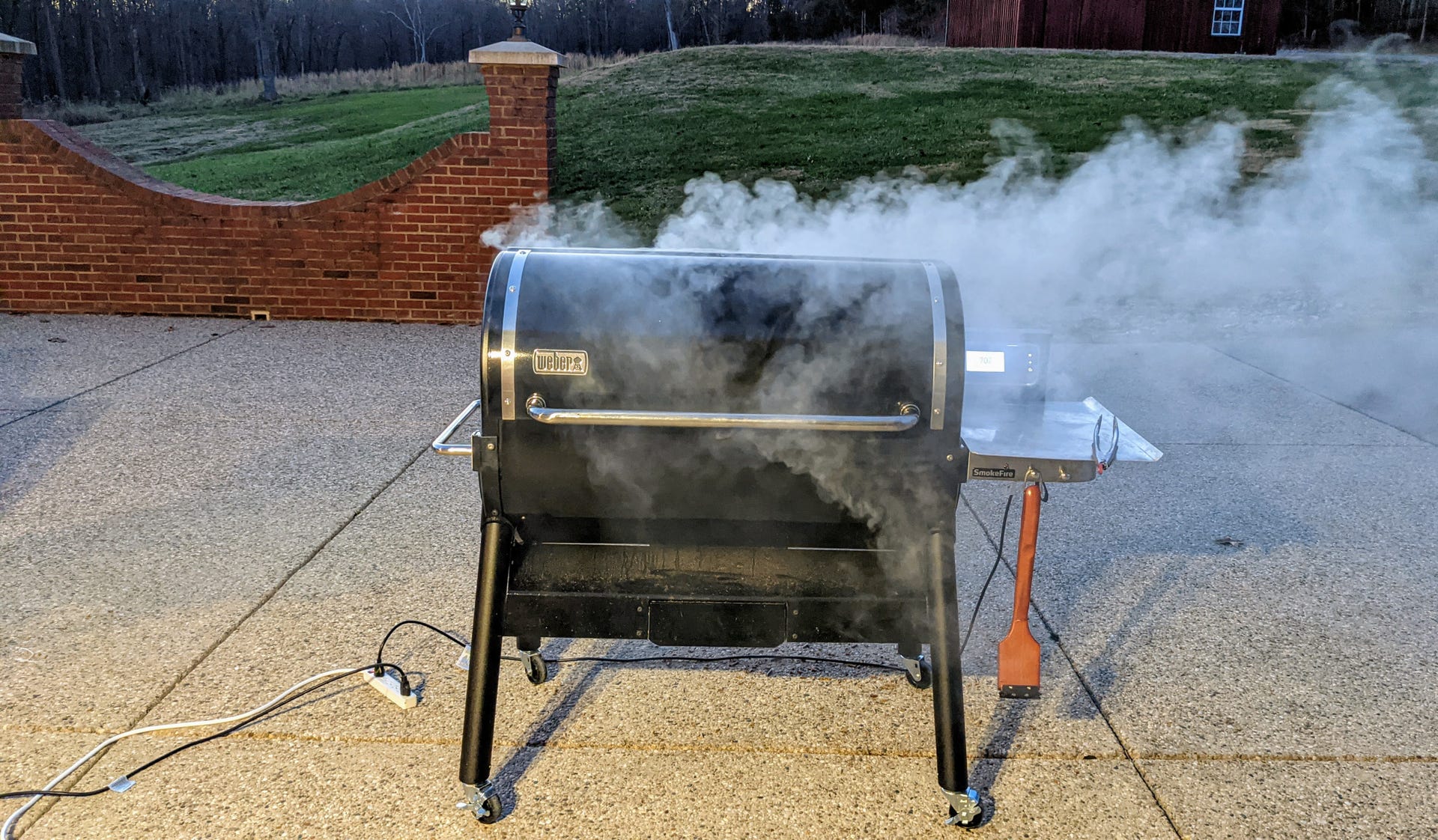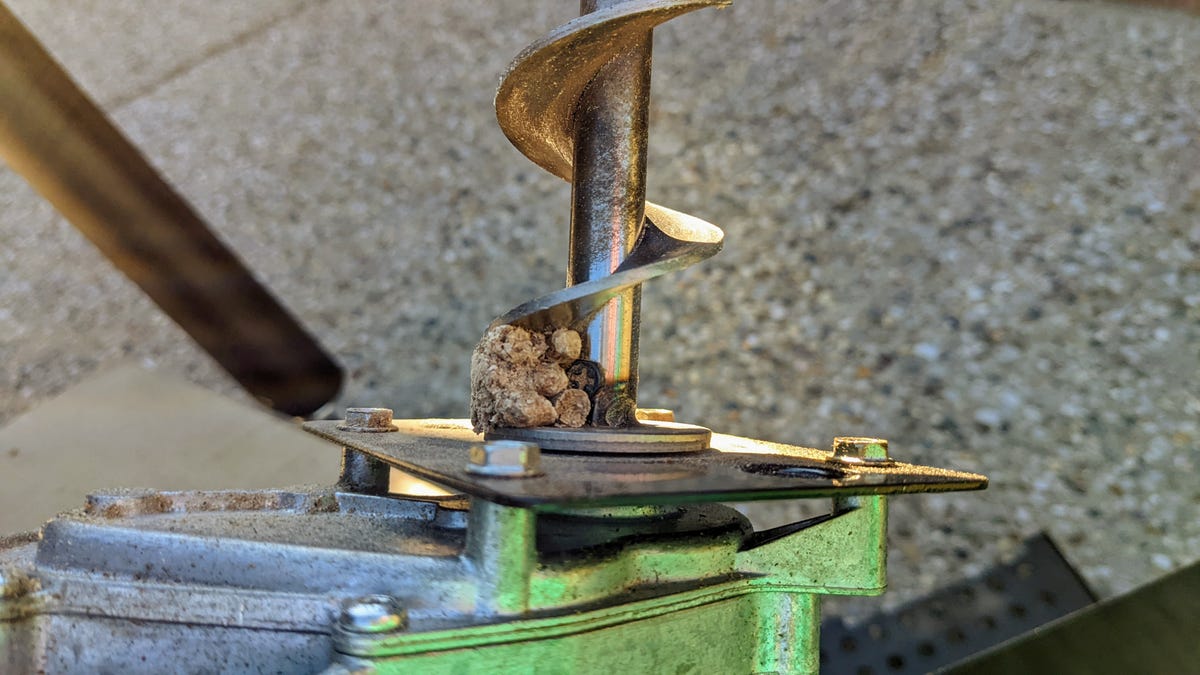 Why You Can Trust CNET
Why You Can Trust CNET
Our expert, award-winning staff selects the products we cover and rigorously researches and tests our top picks. If you buy through our links, we may get a commission. How we test grills
Pellet grills have become extremely popular and are found on many backyard patios, from cooking hot dogs and burgers to brisket and pulled pork, thanks to their ability to hold specific temperatures for hours on end. With a wide range of different wood pellets to use as fuel, any food cooked in them comes out with a delicious, smoky flavor. Whether you are cooking for a large group on the Traeger Ironwood XL or just the family on something smaller like the Brisk It Origin 580, you're in for a treat.
Despite their many strengths, though, pellet grills can be cantankerous. These products aren't simple charcoal grills or even gas models. The complex machines rely on a combination of mechanical parts, electronics and even gravity to operate.
Sometimes while chugging along, something in the regular chain of events goes awry. As a result, you could experience a flame-out, where the fire dies. Or, in a more dangerous situation, an over-fire may happen. However, there are ways to avoid these scenarios. If you employ them, you'll be able to fix these problems quickly or prevent the likelihood of them occurring entirely.

Enlarge Image

Avoid pellet grill malfunctions with regular TLC. This instance started out with lots of smoke and devolved into a dangerous over-fire situation.
Brian Bennett/CNETCook with a clean grill
Like any outdoor grill, pellet smokers must be cleaned regularly. Grease, ash and other gunk build up over time. All that excess grime doesn't just add off-flavors to what you cook; it's also a serious fire hazard. At a minimum, make sure to scrape down the grates before each cook. You'll likely need a deeper cleaning each month or so depending on how often you grill.

Enlarge Image

Use a shop vac to clean out your pellet grill's fire box quickly.
Brian Bennett/CNETClear out the fire box
Weber calls it a "burn pot" while Traeger refers to it as a "fire box." Either way, it's the part of your pellet grill where wood pellets arrive from the hopper for ignition. Going multiple cooking sessions without cleaning this section will lead to trouble down the road.
Too many unburned pellets left over from the last cook, along with lots of ash can prevent fuel from lighting completely. This in turn may extinguish the fire in the fire box. Worse, it can cause fresh pellets to build up inside a weakly smoldering burn pot.
If all that excess wood fully ignites at once, you've got an over-fire. It's a potentially dangerous situation that generates copious amounts of smoke and uncontrolled flames inside the grill. You could even experience a frightening pressure burp as hot vapors fight for a way out of the cooker.
Minimize the chances of these events by cleaning your fire box before each cook. The best tool for the job is a shop vac utility vacuum. It does the job in seconds and with hardly any effort.

Enlarge Image

Empty the pellet hopper and check for any obstructions.
Brian Bennett/CNETCheck on pellet delivery
Sometimes your pellet grill may flame out for no obvious reason. I ran into this issue recently with the Weber SmokeFire EX6. With a rack of baby back ribs on the line, the smoker's internal temperature began to drop 4 hours into my 5-hour cook. My target temp was 225 degrees F yet the cooker at that point was plummeting down to ambient outdoor air temperatures.
Plenty of pellets were in the hopper, too. I also didn't see any tunneling -- when fuel doesn't slide down the sides of the hopper. This can cut off pellet flow to the spinning auger below that feeds the fire box.
The next step is to make sure there are no clogs between the pellet hopper and the auger. Shut your grill down and allow it to cool. Now place a large container under the pellet hopper. A bucket or sealed cardboard box will do the trick. Now open the hopper release door. Pellets should quickly flow from the hopper down into your container. With the hopper empty, check for any obstructions or debris blocking the entryway to the auger.

Expose the pellet auger and check jams.
Brian Bennett/CNETConfirm the auger's not jammed
Another cause of pellet grill problems is a jammed auger. This motorized, corkscrew-shaped part is what drives wood pellets from the hopper to the fire box. Sometimes augers can become clogged by crushed pellets or other debris. To check for jams, you'll likely have to unscrew and remove parts of your smoker to access the auger. You should also unplug the grill before doing anything.
In my case, the SmokeFire's auger system isn't hard to uncover. On the back of the grill is a metal panel covering the auger assembly. I unscrewed four screws holding it in place, then removed it. Next, I disconnected the auger's power cable (attached by a pin harness), then unscrewed the auger (two large screws).

Enlarge Image

I found a mass of crushed pellets that stopped fuel flow.
Brian Bennett/CNETThen I carefully removed the auger from the grill. At the far end of the auger, I hit paydirt, the probable cause of my performance issue. There I found a mass of crushed pellets clinging to the auger's screw blade. I quickly removed the debris from the auger using a flathead screwdriver.
Get back to cooking
With the auger system clear and buttoned up, I fired up the newly cleaned and pellet-resupplied SmokeFire. The smoker easily reached an internal temperature of 225 degrees F. I had successfully fixed my issue.
Of course, there are other things that can go wrong with pellet grills. For example, you could run into a problem with fuel ignition. The telltale sign of that is an excess of pellets accumulating inside the fire box, while the auger spins to add more. If so, the solution likely calls for replacement hardware.
Hopefully, the advice in this guide covers the more common issues you may encounter. And with just a little maintenance you'll be back to cooking in no time.